
3D printing is no longer a concept from the future, and many have already grown accustomed to its integration into everyday life. In the 2020s, no one would be surprised to learn that professionals in these fields use 3D printing in their daily work: manufacturing plants, the automotive industry, education, architecture, and more.
However, the headlines announcing that scientists are printing organs using a 3D printer in medicine and introducing technology into healthcare still seem like something out of the pages of a sci-fi novel.
Surprisingly, 3D printers in medicine have become as commonplace as their use in the automotive industry.
Today, 3D printing medical advancements saves lives and makes it easier for people with disabilities.
How is 3D Printing Used in Health Care?
Creation of custom implants and prosthetics:
- Orthopedics: Medical 3D printing allows for the creation of personalized implants that perfectly match the patient's anatomy, accelerating the healing process and reducing the risk of rejection.
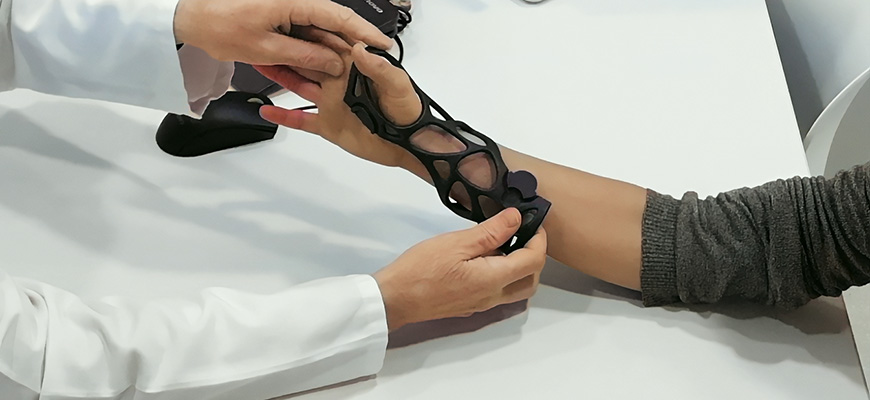
Surgery and preoperative planning:
- Surgery: 3D models of the patient's organs and tissues help surgeons better visualize pathologies, plan complex surgeries, and reduce the risk of complications.
- Cardiology: Models of hearts with congenital disabilities allow cardiac surgeons to study the anatomy in detail and choose the optimal treatment strategy.
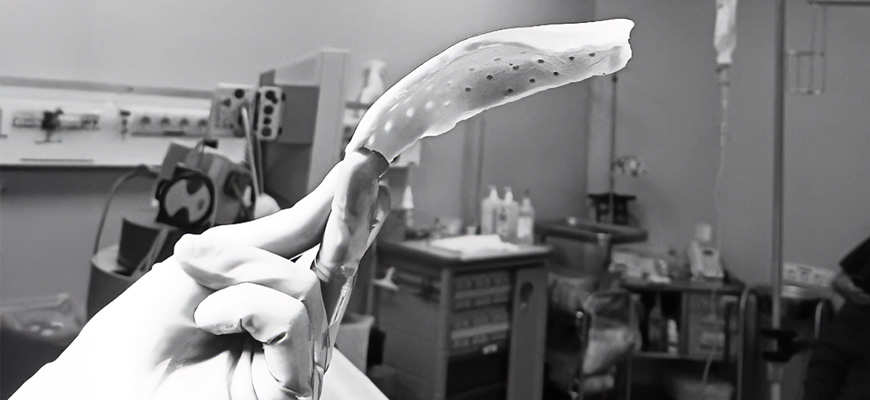
Manufacturing of surgical instruments and guides:
- Neurosurgery: Individualized instrument guides, created with 3D printing medical devices, ensure accuracy and safety during brain surgery.
- Tooling: Instruments for implant placement, created with the patient's anatomy in mind, facilitate the surgeon's work and reduce surgery time.
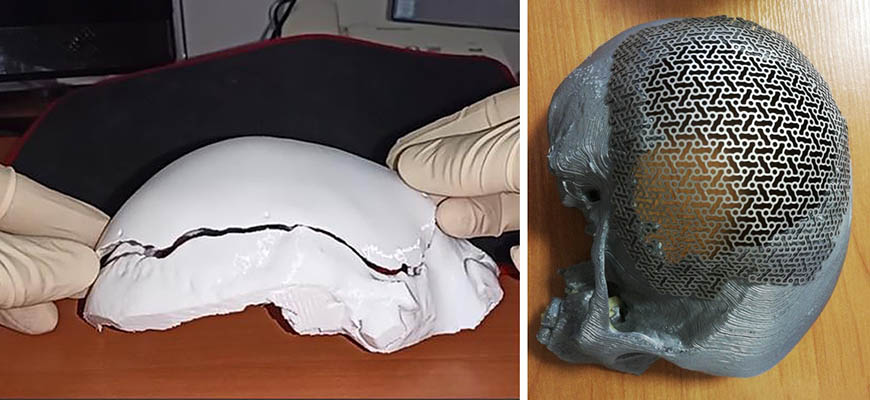
Bioprinting of tissues and organs using special 3D printers:
- Regenerative medicine: 3D bioprinters allow the creation of living tissues and organs, opening up prospects for transplantation and treatment of various diseases.
- Pharmacology: Printing tissues for drug testing reduces the number of animal experiments and accelerates the development of new drugs.
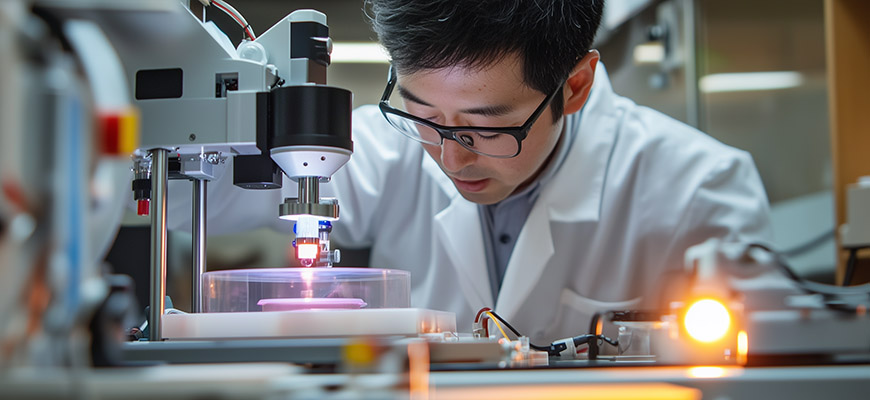
Medical education and simulations:
- Educational models: 3D-printed models of organs, bones, and tissues are used to train medical students and improve doctors' skills.
- Surgery simulators: Realistic models allow surgeons to practice complex procedures and improve their skill level.

Dentistry:
- Orthodontics: 3D printing is used to create custom aligners for correcting malocclusion.
- Surgical dentistry: Guides for dental implantation ensure accuracy and predictability of results.
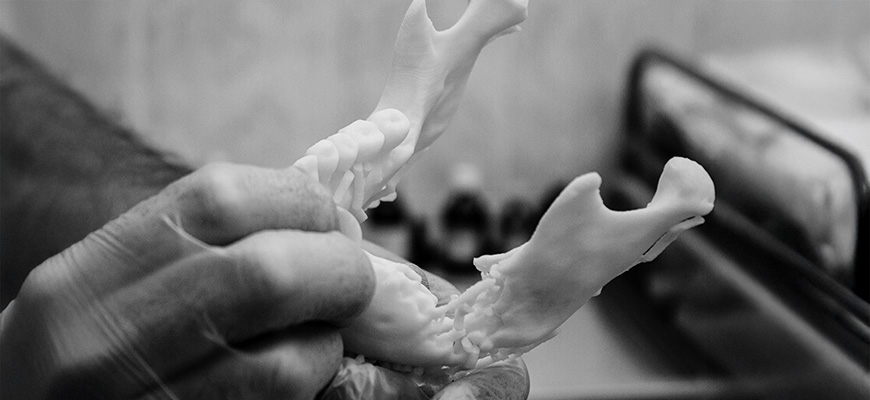
No need for specialized medical 3D printing devices
For most of the tasks, FFF (Fused Filament Fabrication) 3D printing is perfectly suitable.
The medical industry is experiencing rapid growth in the application of FFF 3D printing. This technology is revolutionizing the design, manufacture, and customization of medical devices, implants, prosthetics, and dental restorations.
The ideal 3D printer for this purpose should seamlessly blend user-friendliness with advanced capabilities. It should be intuitive enough for beginners to grasp the fundamentals of 3D printing quickly yet powerful enough to consistently deliver high-quality prints, even for designs with complex geometries.
This is important because a surgeon or orthopedist simply cannot afford to spend hundreds of hours learning how to use a 3D printer in intense work conditions, and clinics often do not have the budget to hire a specialist specifically for this.
This means the printer should have a user-friendly interface, be easily set up, and be prepared in advance for print settings.
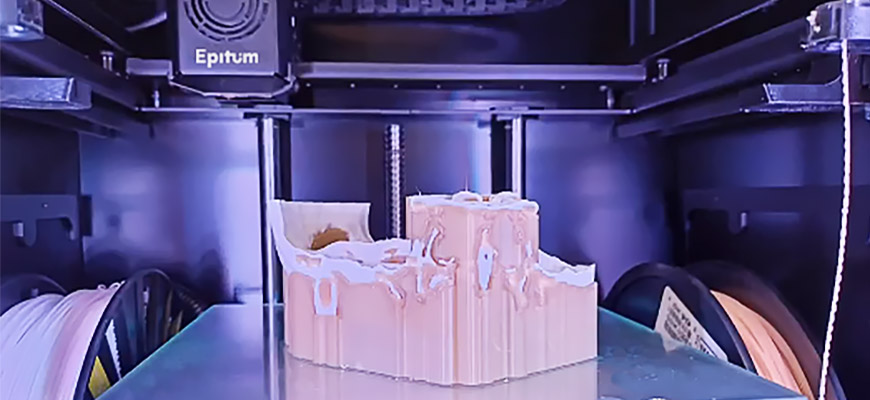
Epitum 3D printers are engineered to meet the unique demands of 3D printing in the medical field. Pre-set material profiles eliminate the need for doctors to spend valuable time experimenting with different filaments. The innovative JetSmart technology also allows for seamless and rapid switching between base and support materials, ensuring a smooth and efficient workflow without technical hindrances for ideal treatment.
Traumatology and orthopedics
Medical 3D printing is a game-changer in orthopedic care, offering a multitude of benefits that improve patient outcomes and reduce costs:
- Personalized Treatment: 3D printing allows for creating custom-fit orthotics and prosthetics tailored to each patient's unique anatomy and needs. This results in improved comfort, functionality, and overall treatment outcomes.
- Enhanced Quality of Life: Custom-fit devices enable patients to regain mobility and independence, leading to a better quality of life and increased participation in daily activities.
- Affordable Replacements: Traditional orthotics and prosthetics can be expensive, especially for children who outgrow them quickly. 3D printing significantly reduces manufacturing costs, making these essential devices more accessible and affordable for families. 3D-printed orthotics can be easily reprinted as children grow, ensuring a comfortable and effective fit throughout the time.
- Complex Designs: 3D printing enables the creation of intricate designs previously impossible with traditional manufacturing methods, opening up new possibilities for innovative orthopedic devices.
Use cases: Xkelet
One of Epitum's partners in the medical field is Xkelet, a Spanish company specializing in 3D-printed medical immobilization devices and software solutions. Its products are designed to replace traditional casts and splints, offering patients a more comfortable, customizable, and lightweight alternative.
The company's core idea is to offer a complex solution for medical immobilization rather than selling individual components like software, scanners, or 3D printers. This integrated approach ensures quality control throughout the entire process, from design to the final product. Xkelet's software is used to design and manufacture medical devices for traumatology and orthopedics, currently addressing up to 70% of the industry's needs for casts and fixators for fingers, hands, forearms, arms, and lower limbs.

These features make Xkelet the world's first solution that can be seamlessly integrated into emergency rooms and trauma centers, enabling on-site 3D printing of custom immobilization devices.
The solution integrates with all Epitum 3D printers, providing a streamlined workflow that simplifies printing with a single "send to print" button.
Neurosurgery and Preoperative Planning
3D printers in medicine play a crucial role in modern preoperative planning by enabling surgeons to create tangible models of patient anatomy, facilitating better visualization and understanding of complex medical conditions.
The process is straightforward: a 3D scan of the patient's affected area is obtained and then converted into a physical model using a 3D printer. Surgeons can then examine this model in detail, meticulously planning the surgical steps and precisely measuring the required dimensions for implants or other medical equipment.
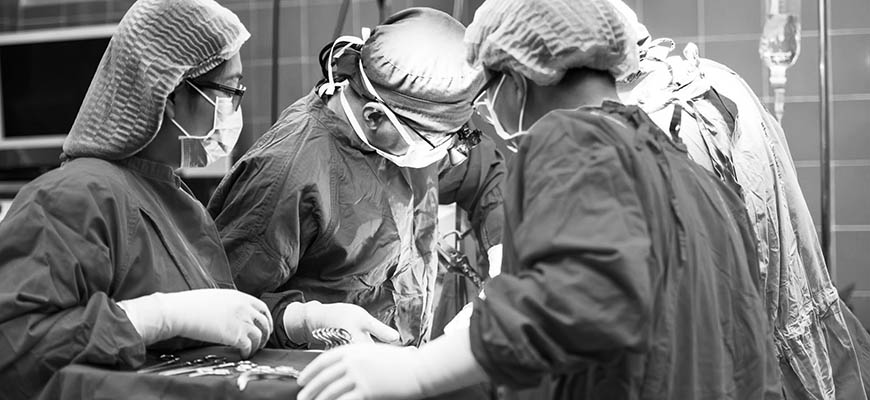
This technology empowers surgeons to practice on these models beforehand, testing different surgical approaches and refining their techniques, ultimately reducing the risks:
- Reduced patient risk: By simulating surgeries on models, surgeons can anticipate potential complications and devise optimal solutions, leading to safer procedures and improved outcomes.
- Shorter operation time: Preoperative planning with 3D models streamlines surgeries, as surgeons are better prepared and can execute procedures more efficiently, minimizing patients' time under anesthesia.
- Enhanced doctor-patient communication: 3D models serve as valuable visual aids, helping patients understand their condition and the proposed treatment plan, leading to more informed decisions and greater peace of mind.
- Improved surgical team collaboration: Surgeons can effectively communicate their surgical plans to the clinical team, ensuring everyone is on the same page and minimizing the chances of miscommunication during surgery.
- Enhanced understanding of patient anatomy: 3D models provide a comprehensive view of the patient's anatomy, reducing the need for invasive exploratory procedures and enabling accurate sizing of medical devices and instruments.
With the widespread availability of imaging technologies like CT and MRI in hospitals, obtaining the necessary 3D files (often in DICOM format) for 3D printing has become relatively easy. These files can be readily transformed into physical models, empowering surgeons with valuable tools for meticulous preoperative planning and improving patient care.
Use cases: Medical Research Centre of Neurosurgery
In a complex case where the superior cerebellar artery was irritating the trigeminal nerve, causing severe facial pain, a 3D model was essential for meticulous surgical planning. To achieve this, a fusion of CT, MRI T1 images, and MRI angiography scans was performed, followed by segmentation using Inobitec DICOM Viewer Pro software.
The resulting 3D model was then printed using PLA+PVA materials on an Epitum JL printer, providing the surgeon with a tangible representation of the patient's anatomy, surgical access points, depth, and necessary instruments.
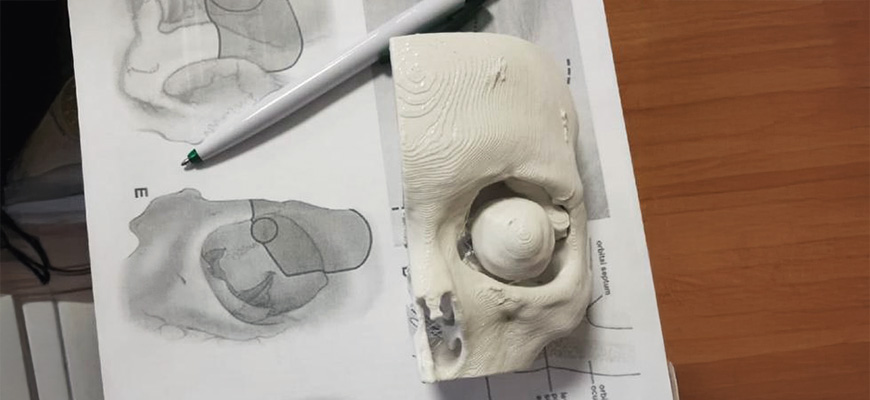
Another application of 3D printing technology is creating silicone molds. Two master models - one of the skull section and one of the implant - were printed on the Epitum JS printer using PLA+PVA. This silicone mold ensured the precise fabrication of the final implant, tailored to the patient's specific needs, ultimately contributing to a successful surgical outcome.
Thanks to JetSmart technology in Epitum 3D printers, the surgeon saved hours of precious time and did not need to compromise by simplifying the shape of the model, as he could use water-soluble supports.
Production of unique medical devices and custom prostheses
3D printing has undoubtedly simplified the process of creating prototypes and small series in all industries and has also proved useful in such a sensitive field as medicine:
- Manufacturing Speed: 3D printing significantly accelerates the production of medical devices. Engineers can create prototypes faster and implement changes if necessary.
- Low Cost: Unlike traditional manufacturing methods, 3D printing offers substantial cost savings, particularly for low-volume production or highly customized devices. This accessibility makes it a viable option for smaller healthcare facilities and research institutions.
- Certified Materials: Advancements in 3D printing materials have led to the development of biocompatible and sterilizable options, ensuring the safety and efficacy of medical devices produced through this technology.
- Super High Detail: 3D printing excels at producing complex geometries, which are crucial for creating precise and accurate medical devices like implants, prosthetics, and surgical guides.
This technology allows medical workers to seamlessly create research tools and visual aids for students, adapting to each unique case.
FFF (Fused Filament Fabrication) 3D printing has become a cost-effective solution for producing prosthetics, especially for rescue teams and operations in areas affected by natural disasters and field hospitals in conflict zones. Numerous organizations are dedicated to creating and distributing these 3D-printed prosthetics to those in need, significantly improving their quality of life.
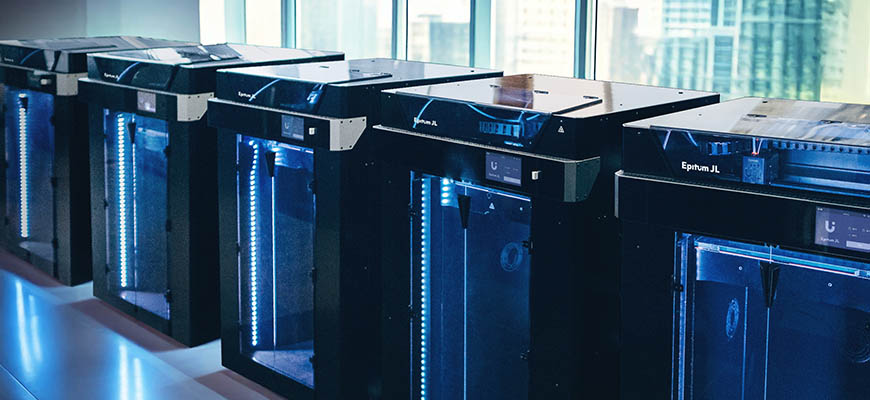
Epitum 3D Printers
3D printing has become important in modern medicine, proving its value in diverse applications. The technology's ability to create complex designs, customize solutions, and utilize innovative materials has opened up new possibilities for patient care.
Epitum engineers collaborate with medical professionals to refine 3D printers and ensure that the technology is not only theoretically impressive but also practical and user-friendly.
The goal is to streamline the 3D printing process for healthcare providers, eliminating the need for extensive technical knowledge while maintaining the ability to produce complex and high-quality prints for medical applications.





